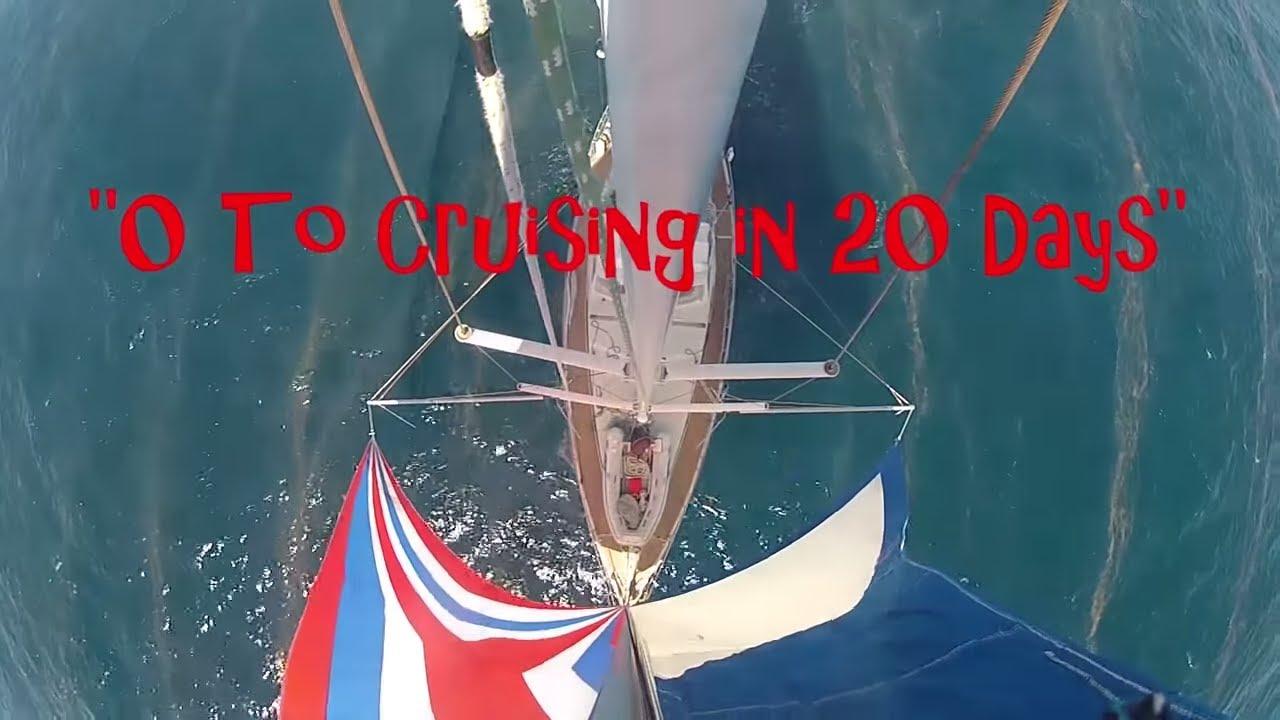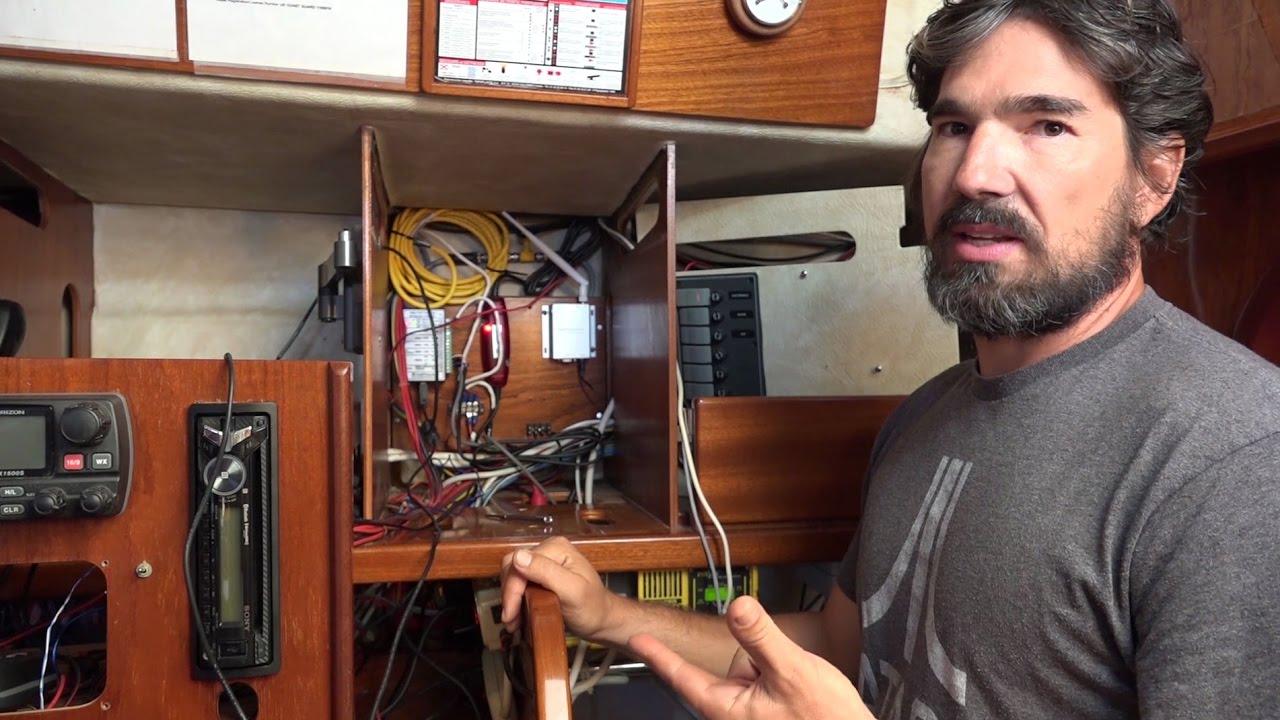In the YouTube video titled "How To Cross the Pacific Ocean: Passage Planning and Weather Routing 💨 Sailing Vessel Delos," the hosts discuss their upcoming journey from Mexico to the South Pacific. They address common questions about passage planning and the resources they use, including their partnership with Predict Wind, a New Zealand-based company that provides weather routing and communication services. The hosts also share insights from their favorite resource, the book "World Cruising Routes," which offers routes and seasonal recommendations for sailing around the world. They highlight the specific route they will be taking and explain the importance of considering the doldrums, a band of unsettled weather where the North and South Pacific systems meet. The hosts provide interesting information about the currents and systems they will be crossing, making this video a valuable resource for anyone interested in crossing the Pacific Ocean by sail.
– Passage planning for crossing the Pacific Ocean: Factors to consider and resources to use
of the North Pacific current which will help us make some good speed. The other book that I really like for this area is called Pacific Crossing Guide. And this one is more specific to the Pacific Ocean. It talks about the routes and the different stops you can make along the way. It also gives you details about the different weather patterns, currents, and potential hazards in the Pacific. This is a great resource to have on board and it provides valuable information for our passage planning.
In addition to these books, we also use modern technology to aid us in our passage planning. One of the tools we rely on heavily is Predict Wind. They provide us with weather routing services that help us choose the best route based on wind patterns and weather conditions. This is crucial for our safety and efficiency during the crossing. With Predict Wind, we can access real-time weather data and forecasts, allowing us to make informed decisions about our route and timing. Their communication services equipment also ensures that we stay connected and can receive important updates while at sea. So, a big shout-out to Predict Wind for their support and contribution to our passage planning.
To summarize, when planning a passage across the Pacific Ocean, it is important to consider factors such as the best time to go, routes, weather patterns, currents, and potential hazards. Resources like World Cruising Routes and Pacific Crossing Guide provide valuable information about these factors. Additionally, utilizing technologies like Predict Wind can greatly enhance our passage planning by providing real-time weather data and forecasts. By combining traditional knowledge with modern tools, we can ensure a safe and successful crossing of the Pacific Ocean.
– Weather routing: Understanding the best time to go and navigating the doldrums
of the North Equatorial Current, which kind of goes like this across the Pacific Ocean, and it changes depending on the seasons. So we have to kind of time it right and try and catch the best current that’s going the right way. And it looks like, according to this book, the best way to cross the doldrums is to go as fast as possible through them, because sometimes they can be quite windless and we don’t want to get stuck there for too long. But, you know, that’s the challenge of sailing, and that’s what makes it exciting. That’s what keeps us on our toes.
So, another resource that we use a lot is Predict Wind, and it’s really cool because they have this awesome weather routing feature. Basically, you put in your boat’s information and the destination, and it gives you the best route to take based on the weather patterns. It takes into consideration things like wind speed, wind direction, wave height, and it helps you plan the most efficient route. It’s a really handy tool to have, especially for long passages like the one we’re about to do. So we’ll definitely be using that to help us on our journey across the Pacific Ocean.
– The significance of currents when crossing from the North Pacific to the South Pacific
of the North Pacific current as we make our way towards the equator. This current flows eastward, carrying warm equatorial water towards the west coast of Mexico and Central America. It’s an important factor to consider when crossing from the North Pacific to the South Pacific, as it can help to propel our sailing vessel in the right direction.
Once we reach the equator, we’ll encounter the doldrums, also known as the horse latitudes. This is a region of light and variable winds, often accompanied by thunderstorms and squalls. The doldrums are formed by the convergence of the trade winds from the Northern and Southern hemispheres, and they can greatly impact the duration of our passage. The length of time spent in the doldrums depends on the extent of the unsettled weather, which can vary from a few days to several weeks.
Moreover, there are interesting currents involved in crossing between these two systems. We’ll be traversing the North Pacific current, which flows from west to east, as we make our way towards the South Pacific. This current can influence our route and speed, so understanding its patterns and characteristics is crucial. Overall, navigating through currents and weather systems is essential for a successful and efficient crossing from the North Pacific to the South Pacific. of the North Pacific current and then we're gonna head across here and then we can pick up some of the South Pacific current. And so that's kind of how we're gonna do it. So, anyway, the doldrums. I mean, anytime you cross the equator you're probably gonna deal with some kind of doldrum. There's a whole bunch of meteorological explanations I could try and give you, but you know, in a nutshell, it's kind of the place where there's no wind.
It's kind of the place where the winds converge and so they either cancel each other out or they create this weird kind of weather pattern. So, basically, you know, you look at the weather patterns. This is a satellite picture. You can see this is the Baja Peninsula here and then there's this big swirl coming past here and all you do is to watch this on a daily basis and just kind of track the wind and see how it's flowing and see how it's moving. And then you sort of, you know, you can give it a week or two and you can kind of gather from previous experience like, okay, yeah, this is probably a good time to go.
Or this is probably, you know, a bad time to go. And so, anyway, that's a little bit about, you know, how we're planning for this passage and what are the key factors. But really, I mean, you're just looking at wind speed and wind direction and then you're looking at current. And so just to give you an idea of what the wind speeds look like, this is from Predict Wind and this is one of the many sources that I use. There are some forecast models.
There's the GFS or the Global Forecast System that sort of gives you like a rough idea on the overall weather patterns and what's happening. And then there are some other models from other sources, like the European models or the US Navy models. And so we tend to use a combination of all of them, but we do really focus with the Predict Wind forecasts, because they seem to be the most accurate and really, really reliable.



